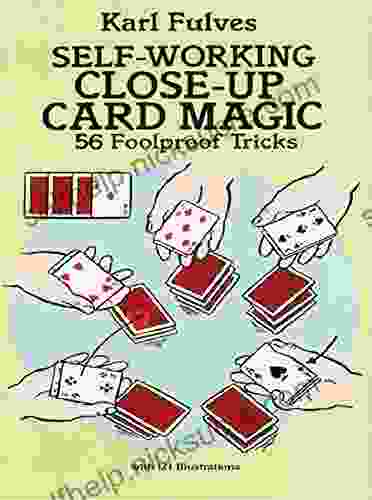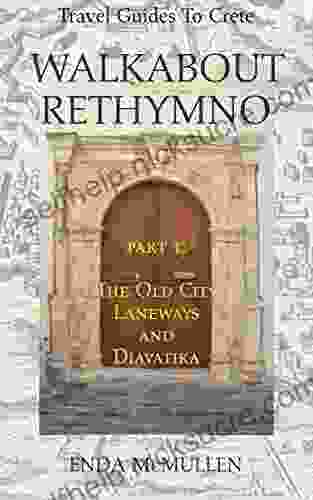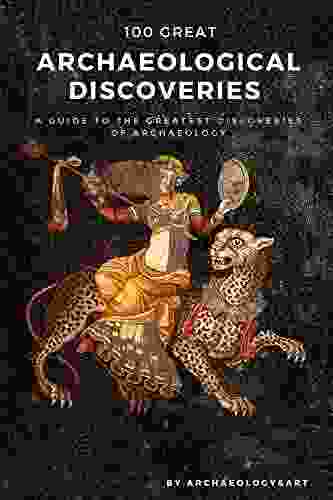A Comprehensive Guide to the Greatest Archaeological Discoveries

4.2 out of 5
| Language | : | English |
| File size | : | 65592 KB |
| Text-to-Speech | : | Enabled |
| Screen Reader | : | Supported |
| Enhanced typesetting | : | Enabled |
| X-Ray | : | Enabled |
| Word Wise | : | Enabled |
| Print length | : | 340 pages |
| Lending | : | Enabled |
Archaeology, the study of human history and prehistory through the excavation, analysis, and interpretation of material remains, has played a pivotal role in unraveling the mysteries of our past. Throughout history, archaeologists have made countless discoveries that have transformed our understanding of ancient civilizations, human evolution, and the development of cultures around the world.
In this comprehensive guide, we will delve into some of the most groundbreaking archaeological discoveries that have captured the imagination of scholars and the public alike. From ancient cities buried beneath the sands of time to exquisite artifacts that reveal the artistic brilliance of our ancestors, these discoveries have shed new light on the human experience and our place in the world.
1. The Rosetta Stone

Discovered in 1799 near the town of Rosetta in Egypt, the Rosetta Stone is a fragment of a larger stele inscribed with a decree issued by a council of priests in Memphis in 196 BC. The decree, which commemorates the coronation of Ptolemy V Epiphanes, is written in three scripts: ancient Egyptian hieroglyphs, Demotic script, and Ancient Greek. The discovery of the Rosetta Stone provided the key to deciphering ancient Egyptian hieroglyphs, a breakthrough that revolutionized the study of Egyptology.
2. The Terracotta Army of Xi'an

In 1974, a group of farmers in Xi'an, China, stumbled upon an extraordinary discovery: a vast army of terracotta warriors buried alongside the first emperor of China, Qin Shi Huang. The terracotta warriors, which number over 8,000, are life-sized and intricately detailed, each one representing a different soldier in Qin Shi Huang's army. The discovery of the Terracotta Army shed new light on the grandeur and sophistication of the Qin dynasty, and is considered one of the most significant archaeological discoveries of the 20th century.
3. The Dead Sea Scrolls

Discovered in the Qumran Caves in the Judean Desert between 1947 and 1956, the Dead Sea Scrolls are a collection of ancient Jewish religious texts that provide invaluable insights into the development of Judaism and Christianity. The scrolls, which were written in Hebrew, Aramaic, and Greek, date back to the 3rd century BC and include fragments from the Hebrew Bible, as well as other religious and sectarian writings. The discovery of the Dead Sea Scrolls has revolutionized the study of biblical history and the origins of Christianity.
4. The Lascaux Caves

Discovered in 1940 in southwestern France, the Lascaux Caves are a complex of caves containing some of the finest examples of prehistoric art. The cave paintings, which date back to the Upper Paleolithic period (c. 15,000-10,000 BC),depict a variety of animals, human figures, and abstract symbols. The Lascaux Caves are considered one of the most important archaeological sites in the world, and their discovery has provided a unique glimpse into the artistic and cultural traditions of our ancestors.
5. The Pompeii eruption

In 79 AD, the Roman city of Pompeii was buried under a thick layer of ash and pumice after the eruption of Mount Vesuvius. The eruption preserved the city remarkably well, and the excavation of Pompeii has provided a unique glimpse into the everyday life of a Roman city. From its well-preserved streets and buildings to its frescoes, mosaics, and other artifacts, Pompeii has become one of the most important archaeological sites in the world, offering a fascinating glimpse into the past.
6. The Antikythera Mechanism

Discovered in a shipwreck off the coast of the island of Antikythera, Greece, in 1901, the Antikythera Mechanism is an ancient Greek astronomical calculator that dates back to the 2nd century BC. The device, which is considered to be one of the most sophisticated mechanical devices from the ancient world, was used to calculate the positions of the sun, moon, and planets, as well as to predict eclipses and other astronomical events. The discovery of the Antikythera Mechanism has provided valuable insights into the scientific knowledge and technological achievements of the ancient Greeks.
7. The Vinča symbols

Discovered on pottery and other artifacts from the Vinča culture in southeastern Europe, the Vinča symbols are a collection of Neolithic signs that date back to the 6th millennium BC. The symbols, which are among the earliest known examples of written communication, have been the subject of much speculation and debate. Some scholars believe that the Vinča symbols represent a form of proto-writing, while others believe that they were used for decorative or ritual purposes. Regardless of their original intent, the Vinča symbols provide a tantalizing glimpse into the development of written communication in prehistoric Europe.
8. Ötzi the Iceman

Discovered in the Alps in 1
4.2 out of 5
| Language | : | English |
| File size | : | 65592 KB |
| Text-to-Speech | : | Enabled |
| Screen Reader | : | Supported |
| Enhanced typesetting | : | Enabled |
| X-Ray | : | Enabled |
| Word Wise | : | Enabled |
| Print length | : | 340 pages |
| Lending | : | Enabled |
Do you want to contribute by writing guest posts on this blog?
Please contact us and send us a resume of previous articles that you have written.
 Fiction
Fiction Non Fiction
Non Fiction Romance
Romance Mystery
Mystery Thriller
Thriller SciFi
SciFi Fantasy
Fantasy Horror
Horror Biography
Biography Selfhelp
Selfhelp Business
Business History
History Classics
Classics Poetry
Poetry Childrens
Childrens Young Adult
Young Adult Educational
Educational Cooking
Cooking Travel
Travel Lifestyle
Lifestyle Spirituality
Spirituality Health
Health Fitness
Fitness Technology
Technology Science
Science Arts
Arts Crafts
Crafts DIY
DIY Gardening
Gardening Petcare
Petcare Liz Carmack
Liz Carmack Charles L Thompson
Charles L Thompson Dk
Dk Shelly Rainforth Collins
Shelly Rainforth Collins Steven M Bragg
Steven M Bragg Marc Kery
Marc Kery Paul Tukey
Paul Tukey John S Ahlquist
John S Ahlquist Andy Mcilree
Andy Mcilree Jermaine Marshall
Jermaine Marshall Matt Forbeck
Matt Forbeck Lara Lillibridge
Lara Lillibridge Kenneth P Miller
Kenneth P Miller John Misha Petkevich
John Misha Petkevich Patrick Hamill
Patrick Hamill Brooke Dojny
Brooke Dojny Gary Webster
Gary Webster Janet Gurtler
Janet Gurtler Kevin Kelly
Kevin Kelly Tarik Unal
Tarik Unal Jacqui Letran
Jacqui Letran Patricia L Thompson
Patricia L Thompson Jonothan Page
Jonothan Page Staff Of The Harvard Crimson
Staff Of The Harvard Crimson Lyn Millner
Lyn Millner Sarah Boslaugh
Sarah Boslaugh Brent Runyon
Brent Runyon Gemma Mccrae
Gemma Mccrae Larry Hart
Larry Hart Larry Olmsted
Larry Olmsted Emenwa Global
Emenwa Global Penny Simkin
Penny Simkin Jonathan Cane
Jonathan Cane John Gray
John Gray Christopher Burris
Christopher Burris John Littleford
John Littleford Gabriela Rosa
Gabriela Rosa Jim Holt
Jim Holt Qukids
Qukids Gerald Paul Clifford
Gerald Paul Clifford Deborah Hughes Hallett
Deborah Hughes Hallett Lori Foster
Lori Foster Lisa Gache
Lisa Gache Johny Pitts
Johny Pitts Dusty Phillips
Dusty Phillips Spanked Teen
Spanked Teen Hugh Acheson
Hugh Acheson Babatunde Peter
Babatunde Peter Manly P Hall
Manly P Hall Mary Jayne Baker
Mary Jayne Baker Jessica Seinfeld
Jessica Seinfeld The Car Crash Detective
The Car Crash Detective Patrisia Gonzales
Patrisia Gonzales Inga Aksamit
Inga Aksamit Harlan Coben
Harlan Coben Greg B Smith
Greg B Smith Steve Colgate
Steve Colgate Temple Bailey
Temple Bailey Audre Lorde
Audre Lorde Joe Kelsey
Joe Kelsey Pedro G Ferreira
Pedro G Ferreira Mia Baxter
Mia Baxter Dory Willer
Dory Willer Fennel Hudson
Fennel Hudson Pete Whittaker
Pete Whittaker Fred Provenza
Fred Provenza Barbara Oakley Phd
Barbara Oakley Phd Brian Christian
Brian Christian Seth Kantner
Seth Kantner Carol Potter
Carol Potter Martin Liebscher
Martin Liebscher Cornelia Pelzer Elwood
Cornelia Pelzer Elwood Nick Fragel
Nick Fragel Eunice Pennington
Eunice Pennington Maureen Connolly
Maureen Connolly Laurie Kennedy Malone
Laurie Kennedy Malone Warren W Wiersbe
Warren W Wiersbe Katie Hoff
Katie Hoff Lisa Fain
Lisa Fain S Ali Myers
S Ali Myers Stephanie Donaldson Pressman
Stephanie Donaldson Pressman Huw Price
Huw Price Audrey Coulthurst
Audrey Coulthurst David Dalglish
David Dalglish Daria Blackwell
Daria Blackwell Spike Walker
Spike Walker Yang Jwing Ming
Yang Jwing Ming Dean Karnazes
Dean Karnazes Janis B Meredith
Janis B Meredith Patty Hahne
Patty Hahne Autumn Carpenter
Autumn Carpenter Eric Jones
Eric Jones Rena Ejiogu
Rena Ejiogu Deborah Falaye
Deborah Falaye G R S Mead
G R S Mead Ken Denmead
Ken Denmead Mark Coeckelbergh
Mark Coeckelbergh Mike Kim
Mike Kim Beverly Conyers
Beverly Conyers Cat Coluccio
Cat Coluccio Tori Bortman
Tori Bortman Maya Angelou
Maya Angelou Jayme Adelson Goldstein
Jayme Adelson Goldstein Philip Clayton
Philip Clayton Mami Wata
Mami Wata John Austin
John Austin Eric S Raymond
Eric S Raymond Nancy Friday
Nancy Friday Audrey Sutherland
Audrey Sutherland Ayn Rand
Ayn Rand Rudy Sanchez
Rudy Sanchez Robert Simons
Robert Simons Rehan Haider
Rehan Haider David J Miklowitz
David J Miklowitz Don Casey
Don Casey Joe Baird
Joe Baird Prayer M Madueke
Prayer M Madueke Richard Strozzi Heckler
Richard Strozzi Heckler Nsca National Strength Conditioning Association
Nsca National Strength Conditioning Association M D William W Forgey
M D William W Forgey Casey Schreiner
Casey Schreiner Michael Grimm
Michael Grimm Avery Faigenbaum
Avery Faigenbaum Mark Baker
Mark Baker Uta C Merzbach
Uta C Merzbach Gabrielle Bossis
Gabrielle Bossis William Schoolcraft
William Schoolcraft Ryan Sleeper
Ryan Sleeper George Orwell
George Orwell Shepherd Mead
Shepherd Mead Robert M Steward
Robert M Steward Marie Rutkoski
Marie Rutkoski Hourly History
Hourly History Rick Burgess
Rick Burgess Sam Pathy
Sam Pathy Richard Ferber
Richard Ferber Augustine Wetta
Augustine Wetta Dk Eyewitness
Dk Eyewitness Greg Gatz
Greg Gatz Cece Winans
Cece Winans Deborah Miller
Deborah Miller Tom Rea
Tom Rea Joe Friel
Joe Friel Keith Mcnulty
Keith Mcnulty Sanya Richards Ross
Sanya Richards Ross Peter Bronski
Peter Bronski Reinhard Bonnke
Reinhard Bonnke J A Baker
J A Baker Nfhs
Nfhs Peter Levin
Peter Levin Lucy Hopping
Lucy Hopping Paul Pilkington
Paul Pilkington Carly Gelsinger
Carly Gelsinger John Skinner
John Skinner Heather Heying
Heather Heying Carl Safina
Carl Safina Claire Nance
Claire Nance Jens Voigt
Jens Voigt Lew Freedman
Lew Freedman Dr Jerisa Berry
Dr Jerisa Berry David Landis
David Landis Sadie Keller
Sadie Keller Michael Paul
Michael Paul Efrain Galeano
Efrain Galeano Kathy Hirsh Pasek
Kathy Hirsh Pasek Luca Caioli
Luca Caioli Fran Zimniuch
Fran Zimniuch Vicki Hoefle
Vicki Hoefle Emily Whaley
Emily Whaley Lindsey Philpott
Lindsey Philpott Jennifer Love
Jennifer Love Brigid Kemmerer
Brigid Kemmerer Tara Dixon Engel
Tara Dixon Engel Brett Ortler
Brett Ortler Alan Vermilye
Alan Vermilye Justine Kerfoot
Justine Kerfoot David Acheson
David Acheson Dan Blanchard
Dan Blanchard Jessica Nordell
Jessica Nordell Kimberly Willis
Kimberly Willis Vivian Sandau
Vivian Sandau Richard H Immerman
Richard H Immerman Zhi Gang Sha
Zhi Gang Sha John Connor
John Connor Sharon Baranoski
Sharon Baranoski R F Egerton
R F Egerton Dima Zales
Dima Zales Maria Montessori
Maria Montessori Steve Bisheff
Steve Bisheff Kevin Bales
Kevin Bales Sofia Price
Sofia Price Ron Dalby
Ron Dalby Karen Whitley Bell
Karen Whitley Bell Harry Bauld
Harry Bauld Danny Staple
Danny Staple Ethan Gallogly
Ethan Gallogly Julia Albu
Julia Albu Lizzie Lane
Lizzie Lane Gaby Melian
Gaby Melian Jerry Scott
Jerry Scott Jeannie Burlowski
Jeannie Burlowski Madelynne Diness Sheehan
Madelynne Diness Sheehan Mark Gardener
Mark Gardener Carolyn Wyman
Carolyn Wyman Paul Oliver
Paul Oliver Vb Leghorn
Vb Leghorn Steven Brill
Steven Brill Robert W Sullivan Iv
Robert W Sullivan Iv Susan F Paterno
Susan F Paterno J C Pater
J C Pater Brian A Hall
Brian A Hall Tracy Deonn
Tracy Deonn John Sharp
John Sharp Leonard Susskind
Leonard Susskind Blake Dresden
Blake Dresden Kilian Jornet
Kilian Jornet James Ori
James Ori Hilary Scarlett
Hilary Scarlett Kathy Jackson
Kathy Jackson Renzo Gracie
Renzo Gracie Mike Doyle
Mike Doyle James Deetz
James Deetz Quick Reads
Quick Reads Debora Rasio
Debora Rasio Jeff Vandermeer
Jeff Vandermeer John Hiker
John Hiker Karl Fulves
Karl Fulves Audrey Grey
Audrey Grey Ashley Rhodes Courter
Ashley Rhodes Courter Samir Okasha
Samir Okasha Ken Phillips
Ken Phillips Aylette Jenness
Aylette Jenness David Code
David Code Conrad Goeringer
Conrad Goeringer Izabelle Winter
Izabelle Winter Bubba Watson
Bubba Watson Kjell Erik Rudestam
Kjell Erik Rudestam Scott Turansky
Scott Turansky Dave Ramsey
Dave Ramsey Roy Benaroch Md
Roy Benaroch Md Antoni Porowski
Antoni Porowski Randi Kreger
Randi Kreger Gail M Nelson
Gail M Nelson Clive Finlayson
Clive Finlayson Timothy J Jorgensen
Timothy J Jorgensen Augustus M Walton
Augustus M Walton James Ladyman
James Ladyman Rufus Stephens
Rufus Stephens Simon Askey
Simon Askey Sonia Mainstone Cotton
Sonia Mainstone Cotton Chris Santella
Chris Santella Kathy Pike
Kathy Pike Gabriel Gambetta
Gabriel Gambetta Deanna Roy
Deanna Roy Greta Eskridge
Greta Eskridge Sara Zarr
Sara Zarr Wilfrid Jonson
Wilfrid Jonson Lawrence A Kane
Lawrence A Kane Aubre Andrus
Aubre Andrus T J Emerson
T J Emerson Miriam Erick
Miriam Erick Kindle Edition
Kindle Edition Rajeev Lal
Rajeev Lal Robert T Clemen
Robert T Clemen Mercedes Lackey
Mercedes Lackey Don J Sharpsteen
Don J Sharpsteen Barbara Blitzer
Barbara Blitzer Yogi Ramacharaka
Yogi Ramacharaka Tara Sim
Tara Sim Tom Humphries
Tom Humphries Johnette Howard
Johnette Howard Sarah B Bush
Sarah B Bush Beatrice Bruteau
Beatrice Bruteau Austa Somvichian Clausen
Austa Somvichian Clausen Adam Parkinson
Adam Parkinson Esther M Toddler
Esther M Toddler Bruno Barnhart
Bruno Barnhart Florin Grancea
Florin Grancea Ernestine Gilbreth Carey
Ernestine Gilbreth Carey Paul Bodine
Paul Bodine Carol Ann Rinzler
Carol Ann Rinzler Print Replica Kindle Edition
Print Replica Kindle Edition William M Kelso
William M Kelso Asia Citro
Asia Citro Lise Eliot
Lise Eliot Chloe Lukasiak
Chloe Lukasiak Suzanne Jurmain
Suzanne Jurmain Christine Ann Lawson
Christine Ann Lawson Morgan Murphy
Morgan Murphy Laurie Katz
Laurie Katz Patrick Holford
Patrick Holford Darja Wagner Ph D
Darja Wagner Ph D Karen Skerrett
Karen Skerrett Loren W Christensen
Loren W Christensen George J Hademenos
George J Hademenos Samantha Bongeka Nqoko
Samantha Bongeka Nqoko Leigh Pearson
Leigh Pearson John Gierach
John Gierach Bernd Brunner
Bernd Brunner Aspen Matis
Aspen Matis Picabo Street
Picabo Street Atlas Kane
Atlas Kane Bernie Chowdhury
Bernie Chowdhury Miriam Manela
Miriam Manela Jeffrey Freed
Jeffrey Freed Jessica S Olson
Jessica S Olson Stan Fischler
Stan Fischler Babu The Panda
Babu The Panda Patricia Stacey
Patricia Stacey Greg Lavern
Greg Lavern Robert Chuckrow
Robert Chuckrow James Feess
James Feess Thane K Pratt
Thane K Pratt Joe Ryder
Joe Ryder Robert M Bramson
Robert M Bramson Madeleine Roux
Madeleine Roux Kira Breed Wrisley
Kira Breed Wrisley Bradley Stone
Bradley Stone B F Skinner
B F Skinner Sharon Slater
Sharon Slater Lilith Dorsey
Lilith Dorsey Graham Frankel
Graham Frankel Kay Wills Wyma
Kay Wills Wyma Deborah T Goldberg
Deborah T Goldberg C M Gray
C M Gray Hillary Davis
Hillary Davis Ed Jaworowski
Ed Jaworowski Tony Clunn
Tony Clunn Proprietary Edition Kindle Edition
Proprietary Edition Kindle Edition Gary D Wale
Gary D Wale John Quick
John Quick Karen Berger
Karen Berger Gareth Loy
Gareth Loy Smadar Lavie
Smadar Lavie Robert Warden
Robert Warden Dustin Hansen
Dustin Hansen Linda Wong
Linda Wong Tracey L Moore
Tracey L Moore Linda West
Linda West Darryl Cunningham
Darryl Cunningham Deborah J Rumsey
Deborah J Rumsey Martin Rees
Martin Rees Austin Ruse
Austin Ruse Larry Miller
Larry Miller Scott Mactavish
Scott Mactavish Belinda Smith Sullivan
Belinda Smith Sullivan Moon Travel Guides
Moon Travel Guides Tim Muehlhoff
Tim Muehlhoff Charles D Garvin
Charles D Garvin Conrad Anker
Conrad Anker Catherine Rodgers
Catherine Rodgers Todd Mikkelsen
Todd Mikkelsen Asiphile Qulu
Asiphile Qulu N West Moss
N West Moss Jim Collins
Jim Collins Drew Harris
Drew Harris Cynthia Hand
Cynthia Hand Ellyn Sanna
Ellyn Sanna R Scott Thornton
R Scott Thornton Lore M Dickey
Lore M Dickey Casey Barber
Casey Barber Ethan Sawyer
Ethan Sawyer Duncan J Watts
Duncan J Watts Ori Hofmekler
Ori Hofmekler Conor Sullivan
Conor Sullivan Richard Boergers
Richard Boergers Lois Lowry
Lois Lowry William Woys Weaver
William Woys Weaver Beverly Bell
Beverly Bell Shelley Johnson
Shelley Johnson Stewart M Green
Stewart M Green John D Mccann
John D Mccann James Nestor
James Nestor Rachel Mitchell
Rachel Mitchell Leslie T Chang
Leslie T Chang Don Orwell
Don Orwell Sam Quek
Sam Quek Vasily Mahanenko
Vasily Mahanenko Brent Dykes
Brent Dykes John Swinton
John Swinton James Garbarino
James Garbarino Denny Emerson
Denny Emerson Mike Mastracci
Mike Mastracci Kay Harris Kriegsman
Kay Harris Kriegsman Nita Sweeney
Nita Sweeney Mohamed F El Hewie
Mohamed F El Hewie Jesus Salcedo
Jesus Salcedo Aubrey Hargis
Aubrey Hargis Susan M Sheridan
Susan M Sheridan Dan Morse
Dan Morse Martha Raile Alligood
Martha Raile Alligood Jim Fay
Jim Fay Joe Hutto
Joe Hutto Ben Riggs
Ben Riggs Paul Parsons
Paul Parsons M Prefontaine
M Prefontaine Deanna Pecaski Mclennan
Deanna Pecaski Mclennan Tiffany Wasson
Tiffany Wasson Martins Zaumanis
Martins Zaumanis Lamis Chebbi
Lamis Chebbi Fred Mitchell
Fred Mitchell Family Traditions Publishing
Family Traditions Publishing Siddhartha Mukherjee
Siddhartha Mukherjee Tony Nester
Tony Nester Elizabeth M Ward
Elizabeth M Ward Mark Parman
Mark Parman Tomasz Witkowski
Tomasz Witkowski Dana Wechsler Linden
Dana Wechsler Linden Nic Stone
Nic Stone Heather E Schwartz
Heather E Schwartz Nancy Owens Barnes
Nancy Owens Barnes E Randolph Richards
E Randolph Richards Kaleb Dahlgren
Kaleb Dahlgren Fred Alan Wolf
Fred Alan Wolf Kristin Fontichiaro
Kristin Fontichiaro Ervin Laszlo
Ervin Laszlo Jessica Nabongo
Jessica Nabongo Robert E Howard
Robert E Howard Peter Gieler
Peter Gieler T Berry Brazelton
T Berry Brazelton Kathleen M Eisenhardt
Kathleen M Eisenhardt Peggy Kaye
Peggy Kaye Sandy Hall
Sandy Hall Ben Sasse
Ben Sasse Judith Z Kallenbach
Judith Z Kallenbach Richard Miles
Richard Miles Nathan Clark
Nathan Clark Roger Lajoie
Roger Lajoie Avinash K Dixit
Avinash K Dixit Dougald Macdonald
Dougald Macdonald Steve Oakes
Steve Oakes David Shoalts
David Shoalts Chris Burkard
Chris Burkard Katie Cotugno
Katie Cotugno Blake Boles
Blake Boles Collins Dictionaries
Collins Dictionaries Laura A Roser
Laura A Roser Larry Dane Brimner
Larry Dane Brimner Geoffrey Budworth
Geoffrey Budworth Nina W Brown
Nina W Brown Simon Pridmore
Simon Pridmore Edward Lee
Edward Lee Matt Wallaert
Matt Wallaert Pat Mora
Pat Mora Bob Smale
Bob Smale Ayesha Ratnayake
Ayesha Ratnayake Barry Cunliffe
Barry Cunliffe Bob Weeks
Bob Weeks Catherine Belknap
Catherine Belknap Timo Holmquist
Timo Holmquist Jerome D Smalls
Jerome D Smalls Linda Fairley
Linda Fairley Marc D Lewis
Marc D Lewis Terasa Cooley
Terasa Cooley Bill Thorness
Bill Thorness Mandy Khoshnevisan
Mandy Khoshnevisan E Paul Zehr
E Paul Zehr Brandon Sneed
Brandon Sneed Steven Rinella
Steven Rinella Vance Packard
Vance Packard Daffodil Campbell
Daffodil Campbell Leonard Mlodinow
Leonard Mlodinow Colleen Hoover
Colleen Hoover Linda Dobson
Linda Dobson Darren Palmer
Darren Palmer Eitan Bar
Eitan Bar Ken Fry
Ken Fry E W Bullinger
E W Bullinger Terry Marsh
Terry Marsh Joanne Simon Walters
Joanne Simon Walters Cora Seton
Cora Seton Gillian Bradshaw
Gillian Bradshaw John Updike
John Updike Mike Eruzione
Mike Eruzione Jeff Szuhay
Jeff Szuhay Levison Wood
Levison Wood Athena P Kourtis
Athena P Kourtis Alan Lightman
Alan Lightman Stephen Morris
Stephen Morris Larry Gonick
Larry Gonick Laura Riley
Laura Riley Colin Towell
Colin Towell Foster Provost
Foster Provost Arthur Benjamin
Arthur Benjamin Norman Ollestad
Norman Ollestad
Light bulbAdvertise smarter! Our strategic ad space ensures maximum exposure. Reserve your spot today!
 John GrishamFollow ·10.1k
John GrishamFollow ·10.1k Levi PowellFollow ·6.6k
Levi PowellFollow ·6.6k Craig CarterFollow ·2.8k
Craig CarterFollow ·2.8k Arthur MasonFollow ·19.2k
Arthur MasonFollow ·19.2k Oscar WildeFollow ·2.8k
Oscar WildeFollow ·2.8k Edward BellFollow ·10.3k
Edward BellFollow ·10.3k David BaldacciFollow ·8.8k
David BaldacciFollow ·8.8k Scott ParkerFollow ·3.8k
Scott ParkerFollow ·3.8k

 Jett Powell
Jett PowellHow to Choose a Church That's Right for You
Choosing a church...

 Bryan Gray
Bryan GrayThe Unbelievable World of Self-Working Close Up Card...
Imagine having...

 Junot Díaz
Junot DíazUnveiling the Enchanting Old City Laneways and Diavatika:...
Crete, the largest of...

 Jamison Cox
Jamison CoxA Year in the American Wild: Recreating a Feast from...
For one year, I lived off...

 Holden Bell
Holden BellArchaeology of Early American Life: An Exploration of...
The archaeology...

 Rodney Parker
Rodney ParkerRegain Your Fertility By Reversing Insulin Resistance,...
If you're struggling to conceive, you may be...
4.2 out of 5
| Language | : | English |
| File size | : | 65592 KB |
| Text-to-Speech | : | Enabled |
| Screen Reader | : | Supported |
| Enhanced typesetting | : | Enabled |
| X-Ray | : | Enabled |
| Word Wise | : | Enabled |
| Print length | : | 340 pages |
| Lending | : | Enabled |












